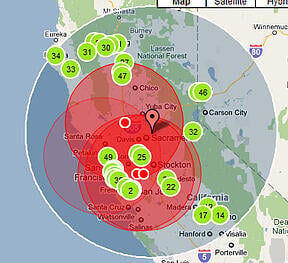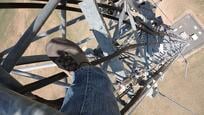Wireless backhaul, often referred to as fixed wireless backhaul or wireless Ethernet bridges, has become a standard for creating network connectivity between locations. Wireless backhaul can be used for establishing data network connections from building to building, field locations to a network presence, connecting network fiber segments, or last mile connections, etc. Wireless Ethernet bridges can also be used for connecting devices on to networks, like IP video cameras, SCADA devices, client devices, phones, two-way radio / pagers, etc.
Wireless backhaul can be in the form of point to point wireless, point to multipoint wireless, or wireless mesh configurations. Wireless bridges can be licensed microwave links or unlicensed wireless Ethernet bridges. A licensed microwave link or wireless Ethernet bridge can provide throughput as low as 10Mbps up to GigE full duplex (with gigabit wireless).
Wireless Ethernet bridges, allow you to eliminate reoccurring costs of leasing fiber from telecommunication companies, eliminate the cost of additional head end equipment, and AES encryption hardware devices. Wireless Ethernet bridges preserve native IP throughout the system. Because you own the microwave link connection and not lease it, ROI is maximized with a low CPEX. You also gain the peace of mind of having control over your own infrastructure.
Take for example the cost to lease a DS3 (45Mbps) connection through a carrier. A typical scenario is that it costs roughly $4000.00 a month with a 3 to 5 year contract. Over three years that’s $144,000.00! Let’s not forget that it also typically takes 3 to 6 months to provision.
Now for comparison, let’s look at a point to point wireless Ethernet bridge using a licensed microwave radios. Although you can install a 50Mbps full duplex (100Mbps aggregate throughput) wireless bridge, most systems are typically purchased at 100Mbps full duplex (200Mbps aggregate throughput) because there just isn’t much cost differential between a 50Mbps and 100Mbps full duplex licensed microwave link. It’s typically the same radio system and just software throttled. Most licensed microwave radios are capable of 366Mbps full duplex (732Mbps aggregate throughput) and 60GHz and 80GHz millimeter wave is GigE full duplex.
A typical 100Mbps full duplex licensed microwave link, which can be installed in several days rather than 4 to 6 months like a DS3, would have a CAPEX of $20,000.00 to $30,000.00 depending on the frequency and distance. Say you add in a 5 year advanced replacement manufacture warranty and annual support from the integrator at a cost of $15,000.00. That’s roughly $45,000.00 compared to $144,000.00. That gives you an ROI of roughly 11 months. Plus you have over double the bandwidth!

As you compare higher bandwidths like leased 100Mbps or gigabit fiber the ROI is increased even further. Most GigE wireless backhauls have an ROI of 3 to 4 months. That’s it. No more reoccurring costs because you own it. If a wireless Ethernet bridge is properly engineered and the wireless installation is done by a professional wireless integrator a point to point wireless backhaul can provide greater security over leased lines and give 99.999% reliability (meaning <5min of predictable outage a year). Most telecommunication companies can only guaranty 99.9% on a SLA because they know they’ll have network outages throughout the year.





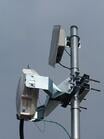 Do you ever experience downtime on you network due to outages with your telecommunications provider, such as: AT&T, Verizon, or Comcast? What does a network outage cost you organization in dollars and man hours due to lack of productivity and internal communication or with clients? What do you say? This never happens? Think again!
Do you ever experience downtime on you network due to outages with your telecommunications provider, such as: AT&T, Verizon, or Comcast? What does a network outage cost you organization in dollars and man hours due to lack of productivity and internal communication or with clients? What do you say? This never happens? Think again!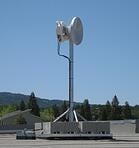 Wireless backhaul connectivity, both
Wireless backhaul connectivity, both 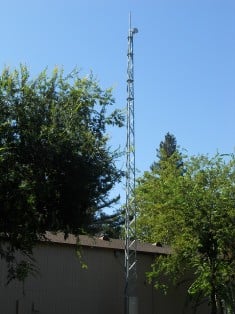 Even though there are some outdoor wireless radio systems that can do
Even though there are some outdoor wireless radio systems that can do 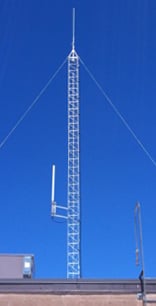 The fact is that there are tower all around us and we just don’t even notice them. Microwave communication towers tend to blend into the skyline. So many times we hear about cosmetic concerns when it comes to mounting antennas on buildings but the fact remains that they are all around and no one ever notices them (unless you are in the wireless industry and pay attention to them). Many are less obtrusive that satellite TV dishes everyone mounts on their homes!
The fact is that there are tower all around us and we just don’t even notice them. Microwave communication towers tend to blend into the skyline. So many times we hear about cosmetic concerns when it comes to mounting antennas on buildings but the fact remains that they are all around and no one ever notices them (unless you are in the wireless industry and pay attention to them). Many are less obtrusive that satellite TV dishes everyone mounts on their homes! 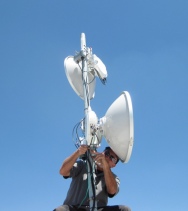 We ended up replacing the Motorola PTP600 unlicensed 5.8GHz wireless Ethernet bridges with SAF Tehnika CFIP Lumina licensed point to point microwave links. The new wireless bridges operate in the licensed 18GHz frequency. The
We ended up replacing the Motorola PTP600 unlicensed 5.8GHz wireless Ethernet bridges with SAF Tehnika CFIP Lumina licensed point to point microwave links. The new wireless bridges operate in the licensed 18GHz frequency. The 
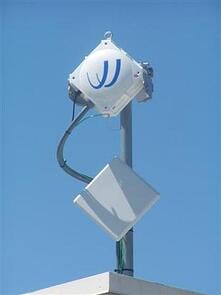 Licensed microwave wireless radio systems are typically built and designed for long term solutions. Point to point licensed microwave links are true fiber replacement systems and offer full duplex wireless communications for both Ethernet and TDM. The licensed wireless bridge hardware is designed to provide carrier grade performance (high bandwidth and low latency). Because a microwave link is licensed and is not to inject and interference on other licensed microwave backhaul operators in the area they must have LOS (line of sight) and not cause heavy multipath. This is a common question of why licensed microwave radios don't use OFDM or MIMO and why they can't be used in NLOS (non line of sight) applications. In a NLOS wireless link application unlicensed wireless backhaul radios that use OFDM or MIMO take advantage of multipath for their connectivity.
Licensed microwave wireless radio systems are typically built and designed for long term solutions. Point to point licensed microwave links are true fiber replacement systems and offer full duplex wireless communications for both Ethernet and TDM. The licensed wireless bridge hardware is designed to provide carrier grade performance (high bandwidth and low latency). Because a microwave link is licensed and is not to inject and interference on other licensed microwave backhaul operators in the area they must have LOS (line of sight) and not cause heavy multipath. This is a common question of why licensed microwave radios don't use OFDM or MIMO and why they can't be used in NLOS (non line of sight) applications. In a NLOS wireless link application unlicensed wireless backhaul radios that use OFDM or MIMO take advantage of multipath for their connectivity.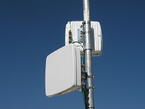 A
A 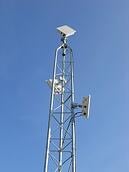
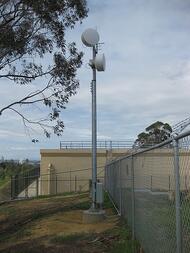 As the USA spends millions lobbying for a fiber build out and billions more slowly deploying a fiber backhaul infrastructure the rest of the world is leap frogging us by skipping over a fiber infrastructure by rapidly deploying wireless backhaul using microwave communications and technologies like
As the USA spends millions lobbying for a fiber build out and billions more slowly deploying a fiber backhaul infrastructure the rest of the world is leap frogging us by skipping over a fiber infrastructure by rapidly deploying wireless backhaul using microwave communications and technologies like 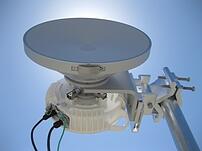
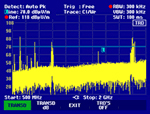
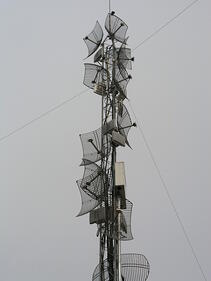 As more and more people get tempted with the thought of 100Mbps, up to 300Mbps providing an extremely fast ROI compared to a leased telco line, more and more unlicensed wireless backhaul will be deployed. The one thing that that people don't understand is that to get the full throughput the system must run at full modulation and channel width with limited wireless interference. This is something that the manufactures forget to mention. Because people are not controlling their RF signals by deploying so called plug and play outdoor wireless bridge systems and using wide beam antennas at full transmit power the amount of interference is going to explode.
As more and more people get tempted with the thought of 100Mbps, up to 300Mbps providing an extremely fast ROI compared to a leased telco line, more and more unlicensed wireless backhaul will be deployed. The one thing that that people don't understand is that to get the full throughput the system must run at full modulation and channel width with limited wireless interference. This is something that the manufactures forget to mention. Because people are not controlling their RF signals by deploying so called plug and play outdoor wireless bridge systems and using wide beam antennas at full transmit power the amount of interference is going to explode.